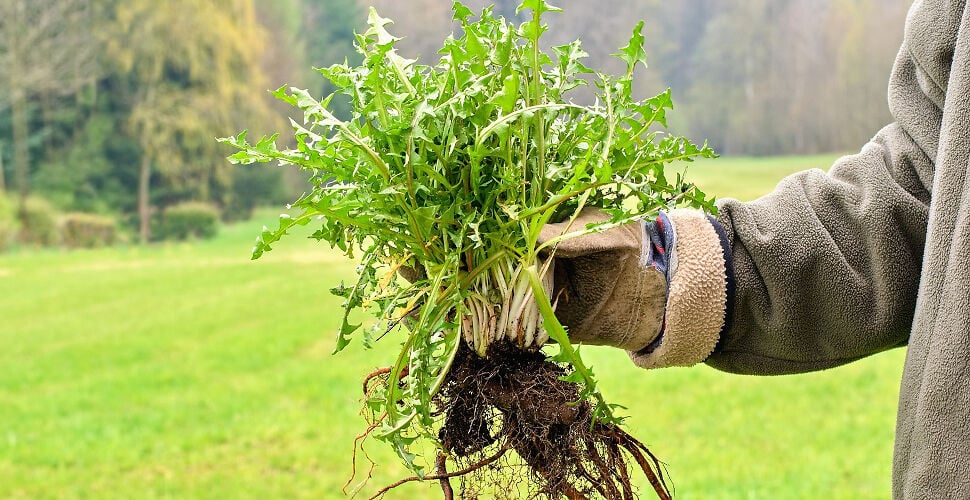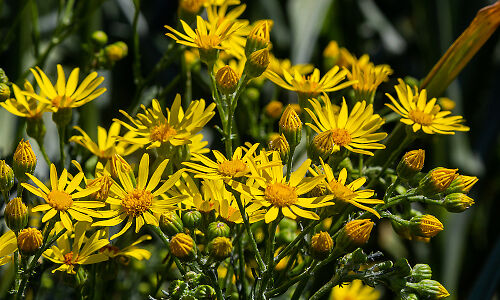
May 26th, 2023 by
For those of us who spend a lot of time taking care of our garden, it can become our pride and joy and keeping it looking its best is of utmost importance. However, it can also become a source of stress. This is largely due to the weeds! In seasons such as spring and summer, we can see an increase in their growth and tackling them can become tricky as some weeds can be incredibly stubborn and getting rid of them requires work and dedication. In this blog, we will discuss some of the most common and stubborn weeds you can find in your garden and how best to treat them.
Why Is It Important to Get Rid of Weeds?
If you are new to gardening, you might be wondering why it is so important to keep weeds at bay in our garden, well there are quite a few reasons it is not simply because they look unpleasant and can ruin the overall aesthetic of your garden.
Competition for Nutrients
One of the biggest problems with letting weeds overrun your yard is that they are in direct competition for all the vital nutrients that the more desirable plants in your garden need in order to thrive and grow well. In fact, weeds will often outgrow these plants too having a strangulation effect resulting in nutrient deficiency and poor growth.
Pest and Disease
Weeds can attract and harbour pests, diseases, and pathogens that can damage your garden. Insects and diseases that infest weeds can easily spread to your cultivated plants, causing widespread damage or even crop failure.
Plant Health and Vigour
Some weeds can also release an allelopathic chemical into the soil – this chemical can inhibit the growth of other nearby plants, which will negatively impact that the growth of the plants you are trying to cultivate.
Encourages Beneficial Organisms
You can create a healthier environment for beneficial organisms such as insects, pollinators, and soil microorganisms by removing weeds. This can be incredibly beneficial to your yards as these organisms play essential roles in pollination, pest control, and maintaining soil fertility.
So, as you can see overall it is beneficial to the overall health and balance of your yard to remove weeds before they get too out of hand. The best way to tackle this is to deal with the first signs, as leaving it too long can result in your lawn growing out of control. Now let’s take some time to look at some of the more stubborn weeds and how to go about rerating them.
Japanese Knotweed
Japanese knotweed is a large, invasive plant that can grow up to 3 metres tall. It has bright green leaves and white flowers in the summer months. Japanese knotweed spreads quickly and can take over gardens and other areas of ground as well as cause problems for buildings and other structures by damaging them or causing them to collapse. Japanese Knotweed is incredibly difficult due to its long roots and quick growth. To treat knotweed it is recommended to use a chemical weed killer containing Glyphosate, do this on new growth for it to be more effective. Likewise, multiple treatments may be required to reach all roots and effectively remove them. In severe cases, you may need to seek professional help.

Ground Elder
Ground Elder is a perennial weed that grows in the UK. It's a problem in gardens, on roadsides and in fields and spreads rapidly. Ground Elder has hollow stems, pointed at the end with clusters of small red or purple flowers that appear from July to September. The leaves are also pointed at the end and are arranged in pairs along each stem. The best way to prevent ground elders from getting out of hand is by removing it before it has started to spread too much - after all, prevention is better than cure! Since their roots grow quite close to the surface they can be removed with a garden fork, however, be careful to remove all of the roots as even the smallest part left behind will cause it to grow back in no time at all.

Creeping Buttercup
Creeping buttercup (Ranunculus repens) is a perennial weed that can grow in damp areas. It's found throughout the UK and it's one of the most common weeds to cause problems for gardeners, who often find themselves pulling up large patches of it.
It grows best in moist soils and can be found along riverbanks or lakesides, but also thrives in lawns, flowerbeds and vegetable patches if conditions are right for growth--that means plenty of sunlight and water! You'll know a creeping buttercup when you see it because it has bright yellow flowers that look like little sunflowers; these bloom from May through September depending on where you live.
While this plant does have some attractive features (like those pretty yellow blooms), there are many reasons why you'd want to get rid of creeping buttercup from your yard: First off, it spreads quickly via underground stems called rhizomes which send out new shoots every year; secondly, because they contain saponins which cause nausea if ingested by humans and livestock alike; finally because they produce white berries containing cyanide compounds which are poisonous when eaten by animals such as cats or dogs
In order to get rid of creeping butter cup you can use a chemical weed killer, if it is growing in a place with other plants you do not want to harm then a selective weed killer is recommended, however, if you want to kill everything in the area a non-selective glyphosate weed killer is very effective too. Alternatively, if you would like a chemical-free solution you can cover the area in a black tarp and cover with mulch over the summer.

Giant Hogweed
Giant hogweed is a tall, flowering plant that can grow up to 5 metres high. It was introduced to Britain in the 19th century and has been spreading ever since. If you come into contact with giant hogweed sap, it can cause severe burns and blisters on your skin - even if it's just from touching the leaves or flowers of this plant. To treat Giant Hogweed a strong chemical weed killer containing Glyphosate or Triclopyr will keep it under control, for large areas repeat treatment may be required.

Ragwort
Ragwort is a weed that is poisonous to horses and cows, so it's best to remove it from your garden before it gets a chance to grow. Ragwort can grow in most types of soil but prefers dry conditions and full sun. It can be found throughout the UK and is part of the sunflower family.
Ragwort plants typically flower from June through September, producing yellow flowers on stalks up to two feet tall. The leaves are oval-shaped with scalloped edges that are covered in fine hairs at first but become smooth as they mature into adulthood.
If you're trying to identify ragwort by its appearance alone, note that there are several other plants with similar features (such as groundsel). However, if you know where this particular species likes living--and how long its lifecycle lasts--you'll have an easier time spotting it before its seeds spread throughout your yard! These weeds can be removed with weed killer or by being dug out at the root.

It's important to keep on top of weeds to protect your garden.
Weeds are a nuisance. They can take over your garden, harm it and make it difficult to grow other plants. They're also unsightly, so if you want to keep an eye on the weeds in your garden, it's important to stay on top of them.
I hope that this post has helped you to understand and deal with some of the most common weeds. If you have any questions, please leave them in the comments below and I'll do my best to answer them for you!
Comments
Leave a reply
Your e-mail address will not be published. All fields are required


